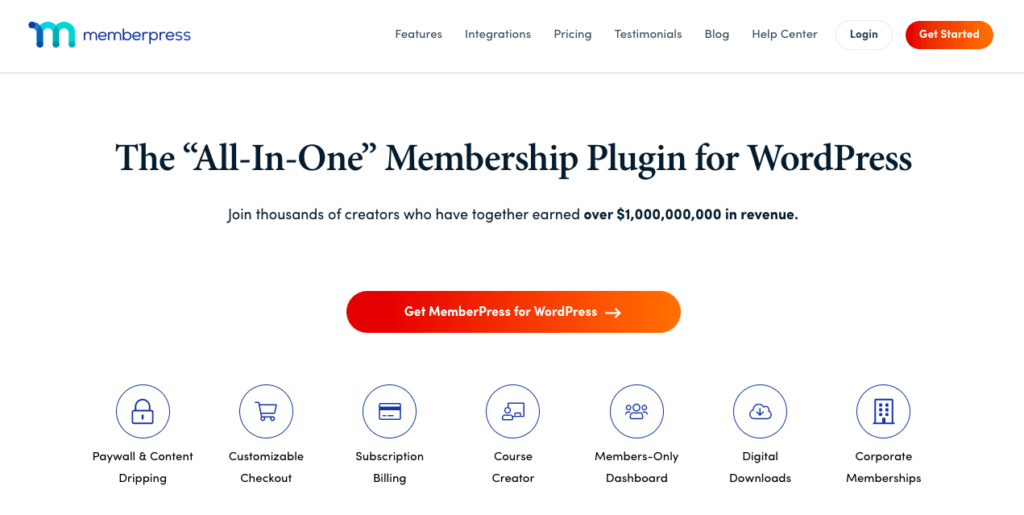Freelancing can sometimes feel like a plate-spinning act.
You’ve got to meet deadlines. You’ve got to keep clients happy across several projects at once, all the while trying to maintain some semblance of a work-life balance.
Good luck, right?
Well, here’s some hope. We’ve put together a list of 12 practical time management tips to help you freelancers improve your routines and take back control of your time.
Pick and choose the ones that work for you. Then build a strategy you can use again and again on future projects.
- Improve your relationships with clients,
- save yourself some sleepless nights,
- and clock off with the satisfaction of a full day’s productivity, ready to enjoy your evening.
It’s totally doable, just read on to find out how.
Why Is Time Management So Hard for Freelancers?
One of the best things about being a freelancer is managing your own time.
- You agree on deadlines with your clients.
- You control when you take breaks.
- You pick your projects
- You control what tasks you work on at each given time.
On the other hand…
One of the hardest things about being a freelancer is (you guessed it) managing your own time.
- Misjudge how long something will take, and it’s all on you.
- If you don’t control your time properly you might never take any breaks.
- If you can’t say “no” to projects, you’ll burn out.
- Procrastinate on fun or easy tasks, and you’ll have to cram hard tasks at the last minute.
- Clients, like bosses, have expectations about communication and when things should be delivered.
- New technologies and changing client requirements can add unexpected time to your project.
Staying focused and on track isn’t a walk in the park, and even the most organized people struggle with it.
But organization is a skill you can acquire. And yes, some people find it easier than others, but with effort and the help of a few tips, tricks, and hacks, anyone can get there.
Yes, that means YOU!
12 Time Management Hacks for Freelancers
1. Insist on a Thorough Client Brief
Misunderstandings and multiple client edits are frustrating and huge time sinks!
So, before you jump headfirst into a project, ensure you have a comprehensive brief. It should outline the project’s…
- Scope
- Objectives
- Target audience
- Any specific requirements that can help you plan for enough time and resources.
Don’t shy away from asking for clarification. It’s way more professional and efficient to do this at the beginning instead of making changes as you go.
2. Break Down Bigger Tasks
Ever stared down a colossal project and felt a pang of anxiety, wondering how on earth you’ll tackle it? We’ve all been there!
The secret sauce to getting things done lies in breaking big tasks into smaller, digestible ones. This makes it easier to stay on track and celebrate those little victories along the way.
Plus, it’s a fantastic way to keep your focus laser-sharp and avoid feeling the dreaded overwhelm.
Breaking your project down into smaller pieces will also make it easier for you to forecast the time you need and invoice appropriately.
So, the next time you’re faced with a daunting project, remember: divide and conquer!
3. Set Realistic Deadlines and Milestones
Be honest with yourself about how long each task will take, and if in doubt overestimate!
Things happen. Bugs, updates, and unfamiliar technologies always crop up right when you think you’re on top of things.
Giving yourself some wiggle room will also help you avoid overcommitting (something that’s all too easy as a freelancer) and burning out.
As a bonus, you also get to avoid those annoying red missed deadline alerts that knock a blow to your self-esteem and drain you of energy.
4. Clearly Communicate Deliverables From Others
As a freelancer, you may not always have a formal team to work with, but you often still have to collaborate with other professionals: designers, copywriters, etc.
Ideally, your client will connect you on platforms like Asana, Monday, or Slack. But even if all you have is email, prioritize communication to ensure everyone understands their responsibilities and deadlines and avoid delays.
5. Factor In “Scope Creep”
Ever heard of the term “scope creep”? Whether or not you’ve heard it, as a freelancer, you’ve probably experienced it.
Nearly 50% of projects encounter scope creep.
It’s when projects grow beyond their initial scope as clients request changes or add new requirements. That means even if you’ve been really careful in calculating the time you need, it probably still won’t be enough.
Don’t get caught off-guard! Add in some extra time to account for the creepy creep. In most cases, a 20-30% buffer is enough, but it really depends on the complexity of the project and how detailed the client brief is (see tip 1).
6. “Eat the Frog”
“If it’s your job to eat a frog, it’s best to do it first thing in the morning, then nothing worse will happen to you for the rest of the day.”
You might’ve seen this quote, falsely attributed to Mark Twain, circling the internet.
Now, hopefully, no one is actually getting paid to eat frogs. But there’s some truth to the idea that you should get your most difficult tasks done in the morning.
Stanford professor of neurobiology and psychiatry, Andrew Huberman agrees. He swears by getting 90 minutes of highly focused work done in the morning. This is the perfect time to tackle your most taxing task of the day.
Throughout your day, try to be mindful of your peak hours of productivity and take full advantage of them.
7. Churn Through the Slump
On the flip side, you’ve got to make allowances for those times of the day when your brain just won’t cooperate.
Maybe your energy levels are low, or maybe your 90 minutes are up and you just need to break up a long stretch of intense work with something else.
Instead of overtaxing your brain, pick another less intensive task to help you keep momentum and avoid burnout. These tasks might include things like making small styling changes, responding to emails, or organizing your workspace.
Reserve these tasks for when you really need them, and avoid using them as an excuse for procrastination.
By prioritizing your tasks based on their importance and difficulty level, you’ll be able to work more efficiently and avoid burnout.
All the while you’ll still be making progress on all aspects of the project.
8. Timebox Your Tasks
You know the usual drill: start a task and work until it’s finished. We’ve got a different approach.
With timeboxing you allocate specific time slots for each task. This helps you stay focused, avoid distractions, and keep on track.
At the beginning of each day, revise your task list and plan out how much time you want to spend on each thing.
Aim to complete your task in the time assigned. If it takes longer than expected, plan in another time slot the following day, and move on.
This is especially helpful if you’re a perfectionist who spends hours working on unnecessary details that are beyond the scope of what’s needed. It forces you to prioritize other necessary tasks on your list and focus on your long-term goals.
Another type of timeboxing
If you’re someone who easily gets lost in the “flow” of work, you might want to try something like the Pomodoro technique:
- Decide what task you want to do
- Set a timer for 25 minutes (you can set your own length of time)
- Focus on your task
- End when the timer rings and take a short 5-minute break
- Repeat two more times
- Take a longer, 20-minute break
- Repeat throughout the work day
During your breaks, step away from your desk, hydrate, and see to other biological needs.
That way, you’ll reduce the risk of burnout after an intense task, and you’ll feel more physically and mentally refreshed for the other tasks on your list.
9. Bust the Multitasking Myth
Another way to help you focus is to acknowledge that multitasking isn’t a thing! Multiple studies confirm you cannot split your attention between several tasks at once.
Instead, all you’re doing is switching your attention rapidly between tasks. And people who do that increase their stress levels, make more errors, and are less productive than those who focus on one thing at a time.
What does that mean for time management for freelancers?
- Focus on one project at a time,
- Focus on one task at a time,
- Keep your phone at a distance while you’re working
- Set aside time to answer emails and messages
10. Track Your Time
As a freelancer, the last thing you want is extra admin, but we promise this one’s worth it.
Even if you charge on a project basis (as opposed to by-the-hour) track your time!
This will help you really see how much time you spend on each task making it easier to forecast future projects.
Toggl Track is a great time-tracking tool for doing just this. Their free version lets you easily track how long tasks take and identify areas for improvement.
11. Use Flexible Plugins to Help With Scope Creep
Here’s a time management tips for the developers out there.
As we now know, dealing with scope creep is just part of the gig for freelancers. So, to save time and avoid getting bogged down in endless customizations, choose plugins that are flexible and adaptable to your client’s needs.
For example, MemberPress is a fantastic option for developers building membership sites for their clients.
Its flexibility and long list of integrations and add-ons mean you can easily adjust features and functionalities to meet specific client requests. No breaking a sweat!
By selecting versatile plugins like MemberPress, you’ll not only save time but also make the whole process smoother for you and your clients.
Embrace the power of adaptability and keep scope creep at bay!
On the flip side…
In case you haven’t noticed, our site (MemberPress.com) is not just our product storefront.
It’s also the platform we use to manage the subscriptions of the creators who purchase our product from our product storefront (whew!).
The reason being that MemberPress is an incredible client management platform and, thus, a time management platform too. More on that later…
12. Save Time With Plugins That Do the Heavy Lifting
Let’s face it: sometimes, you’re just short on time. But fret not! In those moments, you can lean on plugins that do the heavy lifting for you and deliver professional results in mere minutes.
By choosing tools that simplify the development process, you can maintain your productivity without sacrificing quality.
For instance, MemberPress’s feature comes to the rescue when you’re time-strapped. With ReadyLaunch™, you can quickly set up a membership site that looks polished and professional – all while saving yourself precious hours.
Embrace these handy time-saving tools, and you’ll be able to focus on the bigger picture while still delivering top-notch results for your clients.
BONUS TIP 13. Save Time on Client Handover
Just when you think your project is all wrapped up you remember…client handover. This process can be time-consuming and frustrating if you can’t quickly and effectively explain CMS functionalities to your clients.
To make this process as smooth as possible, choose plugins with excellent documentation.
Thorough documentation not only helps clients understand their site better, but it also empowers them to maintain it independently. This saves you from spending countless hours on support and handover.
For example, at MemberPress we offer a ton of videos and documents to guide users through the setup process, features, and troubleshooting. This makes it a breeze for clients to manage their sites.
When choosing which plugin to use, look for positive reviews about their customer service and documentation. You’ll save time and ensure a seamless handover experience for both you and your clients.
The Takeaway
There you have it, our 12 (plus one bonus!) stress-saving hacks to help you reclaim your precious time and sanity.
Here’s a recap of our time management tips for freelancers:
- Get a thorough client brief and ask questions to establish the project scope.
- Break down bigger tasks.
- Set yourself realistic deadlines.
- Communicate with collaborators to receive deliverables on time.
- Factor in scope creep.
- Start with your hardest task.
- Save less intense tasks for when you really need them.
- Timebox your tasks.
- Forget multitasking and focus on one thing at a time.
- Track your time.
- Use flexible plugins.
- Short on time? Research plugins that can do the heavy lifting.
By putting these time management tips into practice, you’ll boost your productivity and improve relationships with your clients. Ultimately making freelance life a whole lot more enjoyable.
So, give them a try! Mix and match these tips to create your very own time management strategy that fits your unique working style.

Get MemberPress Today!
Building a membership website for your clients? Choose the #1 WordPress membership plugin.
Got any time management tips to help freelancers in our MemberPress community? Share them with us. in the comments section below.

























Add a Comment